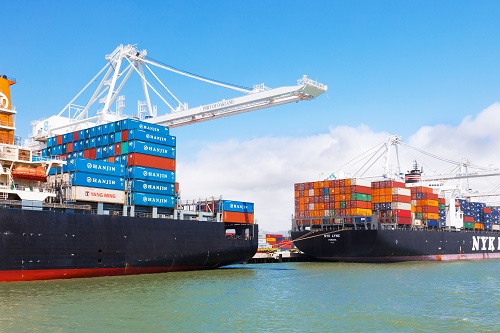CSCs emerged long before the pandemic; now their presence is magnified through crisis, supply chain delays
October 8, 2021 – Before the pandemic, Consolidated Service Centers (CSCs) were emerging as a viable option for IDNs large enough to take on the challenge of self-sufficiency within their supply chains. The challenges of the pandemic highlighted why CSCs continue to gain popularity among IDNs.

According to a recent survey of health systems regarding CSCs given by Jamie Kowalski Consulting, a healthcare research firm, 76% of respondents felt government responded poorly or very poorly to the pandemic, and 53% felt distributors responded poorly or very poorly to it. Also, 41% felt GPOs responded poorly or very poorly to the COVID-19 crisis.
“There was a perception that direct suppliers performed better than distributors,” said Jamie Kowalski, founder of Jamie Kowalski Consulting and a strategic advisor in healthcare supply chain management. “But no supply chain in the world can make products suddenly appear that were never forecasted or required. It was a wakeup call on preparedness plans for health systems. The existing plans were insufficient.”
The top challenges were the lack of available stock, escalating unit costs for PPE and other stock, and increased lead times, particularly from international sources for PPE. This led to health systems identifying and qualifying new sources of supply quickly and asking themselves what their actual demand was, and when and where they needed it.
And IDNs with CSCs in place 100% believed it helped them respond to the pandemic. A CSC provides a centralized facility that can provide services for different care facilities within a health system. Typically, a centralized supply distribution center can consolidate inventory and increase procurement savings through contracting, logistics and better purchasing.
“Most [IDNs with CSCs in place] already had some direct contracting purchasing infrastructure and procedures in place before the pandemic,” said Lorcan Sheehan, founder and CEO of Dublin, Ireland-based PerformanSC Supply Chain. “When existing suppliers couldn’t scale, IDNs with CSCs at least had a basis to move forward.” These IDNs also had the physical logistics capability for warehouse space and could look to scale, according to Sheehan.
“They had a way to secure, maintain, and distribute product effectively within their health system,” Sheehan said.
With logistics challenges across the globe, plus delays at U.S. ports, there’s a need to rethink the approach to inventory and risk. “There’s a greater expectation during the next crisis for supply chain to respond with better preparedness,” Kowalski said. “So, there’s a bigger appetite for investments in the supply chain.”

These potential investments include how to structure and scale around technology for better visibility as well as demand management, forecasting, and allocations. It also focuses on more system-driven processes over manual processes. Health systems are moving away from single sourcing for particular products and are open to partnerships with manufacturers to secure supply and capacity.
“There’s a more conservative approach short term to holding more inventory,” Kowalski said. “But demand planning and forecasting is difficult. You can do it for the long term, but it’s challenging for the short term. A modified forecasting approach between suppliers and buyers will never be exactly on point.”
For large IDNs, the benefits of having a CSC include better control and supply standardization. Improved service levels come along with a centralized supply distribution center as well as organization to system-wide services.
“But nobody thinks the CSC model is perfect. It hasn’t worked for some,” Sheehan said. “Some IDNs have achieved success and a level of scale, but they can invest tools and talent to run it.” He added that health systems must know their spend and demand first and must emphasize discipline within their health system.
“Most want control to ensure their deliveries, but it starts with discipline within their own organization,” Sheehan said. “Then benefits can be achieved through partners with clear requirements.”
